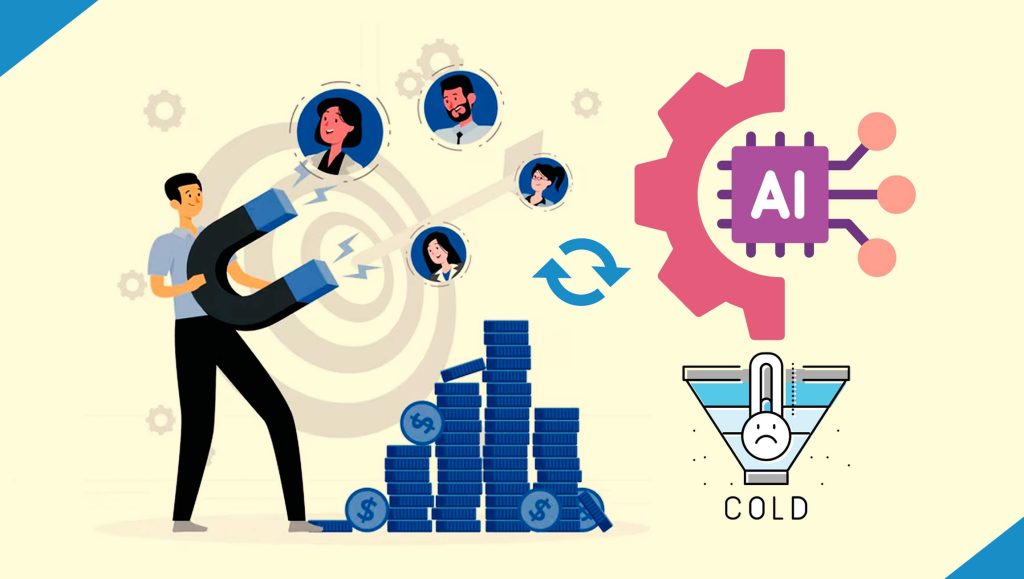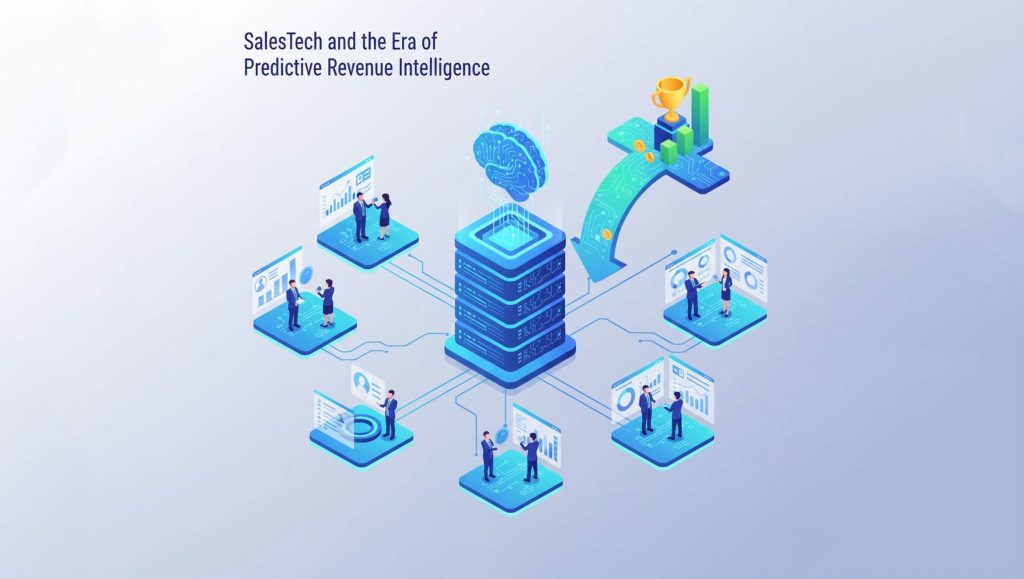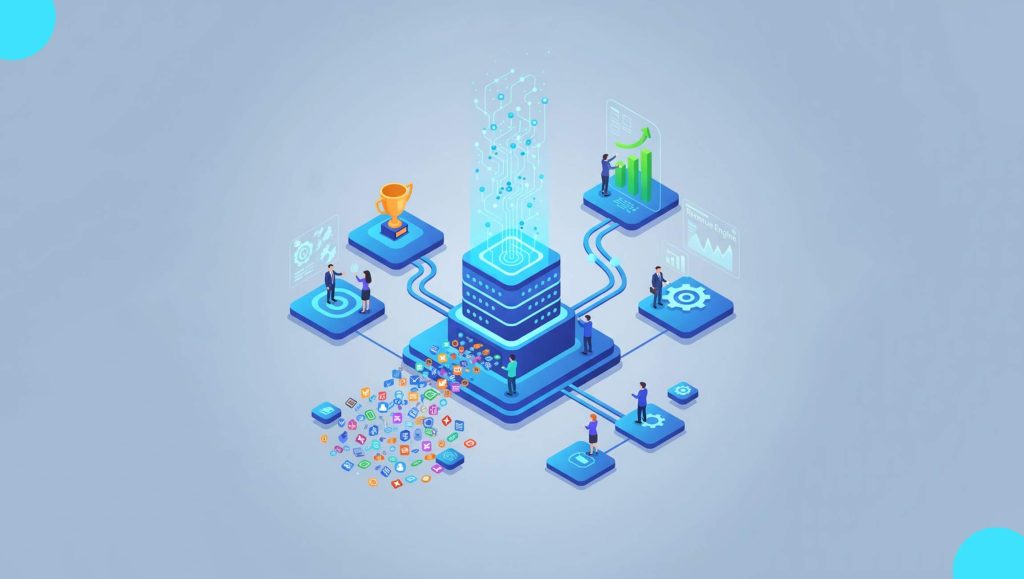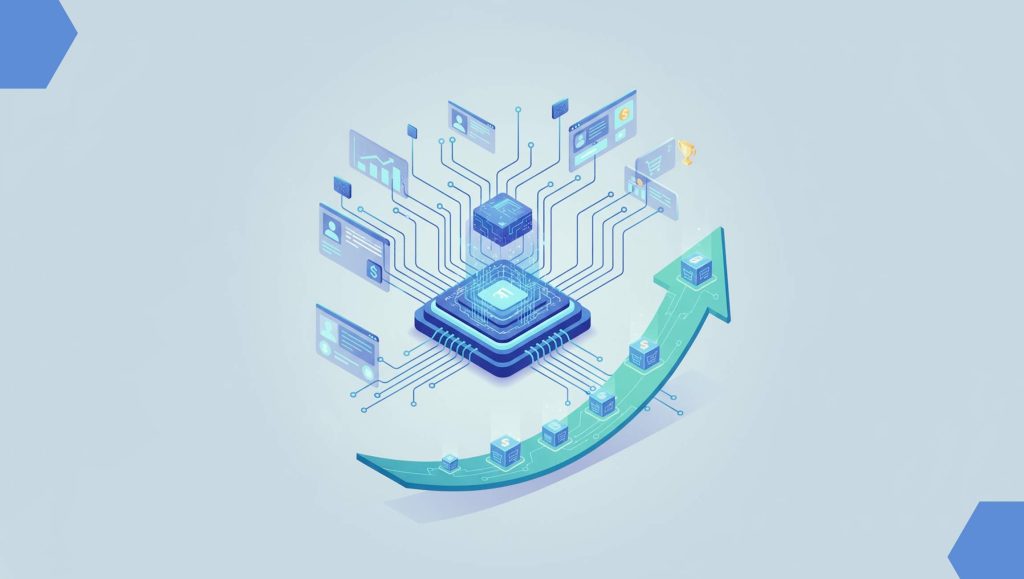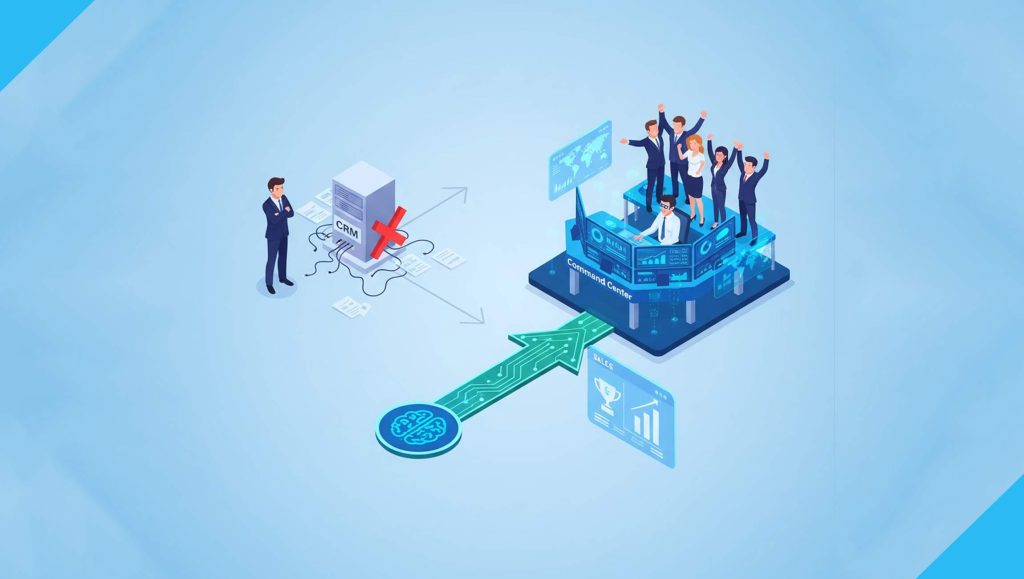Although it’s common for sales and marketing teams to believe that pursuing cold or dormant leads is pointless, it’s crucial to understand that these leads frequently contain untapped potential. With the correct strategy, cold leads can be re-engaged and turned into hot prospects. It should be noted that a lack of follow-up or poor engagement tactics causes more than 50% of all produced leads to go cold within a week. These dormant leads are a significant wasted opportunity for many companies, as they could have generated income that was never touched by the sales funnel.
Cold leads frequently disappear despite the first attempts to pique interest, wasting businesses’ money and effort. For sales and marketing teams, cold leads—leads who were interested but later lost interest are challenging. Prospects who previously expressed interest could lose that interaction because of untimely follow-ups, pointless content, or changing priorities. With little to no certainty of reactivation, the conventional techniques of personally following up or sending generic emails can be ineffective and time-consuming.
Since sales teams are frequently inundated with current leads, they can give these cold prospects less priority, further obscuring them. Cold leads show wasted revenue and untapped growth potential in this static stage. Automation and artificial intelligence (AI) technologies are changing the way firms handle dormant or cold leads.
These technologies efficiently re-engage cold leads, turning lost possibilities into new prospects through predictive analytics, tailored outreach, and intelligent automation. Businesses may now easily rekindle interest, boost engagement, and revitalize their sales funnels using AI’s capabilities. Let us see what cold leads are and why reactivating these leads are important. We will learn about the role of AI and automation and how AI-powered automation tools are useful for identifying and reactivating cold or dormant leads giving sales and marketing teams fresh opportunities to engage previously lost prospects.
What Are Cold Leads and Why Reactivating Cold Leads Is Important?
After expressing early interest, prospects who have become cold leads have stopped participating in the sales process. They may be people who attended webinars, downloaded whitepapers, or subscribed to newsletters but never made a purchase. These are potential customers who have expressed minimal interest in your business but haven’t yet converted into paying customers.
A lead may go cold for several reasons, such as improper or generic follow-up, shifting consumer priorities, or irrelevant or generic messages. If re-engaged at the appropriate moment and with the appropriate message, cold leads may still have potential and are not necessarily completely uninterested. Cold leads, in contrast to warm leads, could not know what you provide and aren’t actively looking for your firm. They thus need more work and nurturing to become paying customers.
Although warm leads receive a lot of attention in marketing techniques, cold leads are equally important. They provide a useful source of new customers who have already expressed interest in your company.
Targeting cold leads for reactivation gives you the chance to interact with people who might be more open to your offers than new prospects. These leads can be nurtured in a way that will eventually lead to a sale and loyal customers. Reactivating cold leads is also frequently an affordable strategy to bring in new revenue. These people may require less marketing work and expense to convert than completely new leads because they have already engaged with your business in some way.
The Price of Cold Leads
A company’s profitability can be greatly impacted by dormant leads. Countless hours of work have gone into generating these leads, from outreach to marketing. They represent lost potential when they get frigid. Sales teams may ignore the large pool of dormant leads that could be awakened in favor of spending endless hours producing fresh ones.
Cold leads build up and produce an increasing backlog that can choke the sales funnel and hinder the expansion of the company. Studies show that reactivating cold leads is frequently less expensive than getting fresh ones, but companies often overlook this opportunity.
Conventional Methods for Reactivating Cold Leads
Reactivating cold leads used to be mostly a labour-intensive manual process. Sales representatives would rely on mass email campaigns in the hopes that a message that would appeal to everyone would be received. As an alternative, sales teams would manually follow up with leads, frequently depending on intuition to decide which ones were worthwhile.
Even while some leaders might have come back, these attempts lacked scale and accuracy. Additionally, they were prone to timing errors and human errors, which led to low conversion rates and lost labor.
Therefore, it is no longer an option to leave cold leads inactive in the cutthroat business environment of today. The old-fashioned approaches to re-engaging are not working. But thanks to automation and artificial intelligence (AI), organizations can now quickly turn these inert leads into profitable prospects.
The Rise of AI and Automation in Lead Reactivation
Converting leads into customers is more important than ever in the hectic business world of today. However not every lead stays equally intrigued as the others do during the sales process. Many leads get cold, for a variety of reasons, including an excessive quantity of useless information, shifting consumer wants, or a failure to follow up promptly.
Conventional techniques for reactivating leads, such as manual follow-ups and mass email attacks, are frequently laborious and inefficient. Enter artificial intelligence (AI) and automation: potent technologies that are revolutionizing the way marketing and sales teams interact with cold leads. These technologies offer scalable and intelligent ways to re-engage prospects and convert prospects into sales.
The Power of AI in Sales and Marketing
The field of sales and marketing is fast changing because of AI. AI can process enormous volumes of data, which it uses to produce insights that were previously impossible to produce through manual labor. AI’s primary advantage in the lead reactivation scenario is its capacity to examine consumer behavior, interaction history, and market trends, spotting patterns that could assist sales and marketing teams in more efficiently prioritizing leads.
AI-powered systems, for instance, can track a potential customer’s interactions with a brand, including the emails they read, the links they clicked, and the frequency of visits to the business website. With the use of this information, AI can forecast which leads are most likely to re-engage and which strategies will work the best.
AI provides data-backed choices that enable more precision, in contrast to conventional approaches where sales staff rely on gut feeling or sparse customer knowledge. With a focus on data-driven insights, leads are now prioritized, and reactivation possibilities are more successfully pursued.
AI is very good at predicting analytics as well. AI can assess the chance of conversion by examining the historical behavior of cold leads; this makes it simpler for sales teams to concentrate their efforts where they will have the greatest impact.
Sales and marketing teams can more effectively prioritize their efforts by using predictive models to identify leads who, based on their past behavior, may respond favorably to a re-engagement effort. This change raises the general effectiveness of sales teams in addition to improving the lead management procedure.
What Makes AI Different for Cold Leads?
The fact that cold leads are a large pool of ostensibly dormant prospects is one of the main issues associated with them. Finding the prospects that still have potential can be like trying to find a needle in a haystack for sales teams. Here’s where AI sets itself apart from conventional techniques.
A human team would not be able to process and analyze such large amounts of lead data at the speed and scale that artificial intelligence can. It can assess variables including prior purchasing patterns, interaction histories, engagement levels, and even outside data like market trends or social media activity. AI can compile a thorough picture of each lead’s potential and provide well-informed suggestions on which leads to pursue by assembling these disparate data sources.
AI’s capacity to identify obscure patterns is particularly useful for cold leads. Even a seemingly inactive lead can be displaying tiny indicators of rekindled interest, such as engaging with information from a rival or returning to the firm website after months of inactivity. These signals are detectable by AI, which flags such leads for follow-up before they entirely disengage.
AI is particularly well-suited to the task of reactivating cold leads because of its capacity to forecast lead behavior. Sales teams may concentrate on the prospects that have the highest conversion rates by using AI’s targeted approach, which replaces the need for haphazard outreach or general strategy.
Why Automation Matters?
Even while AI helps identify which cold leads are most suitable for follow-up, automation is still necessary for the successful implementation of re-engagement strategies. In today’s highly competitive sales environment, timing and consistency are critical. Due to their regular overload of leads, sales teams often find it difficult to swiftly follow up with cold leads. Here, automation might be helpful by offering outreach programs that are scalable and reliable.
Automated communication flows can be used by businesses to create personalized, timely communication flows with cold prospects, bringing them back into the funnel. Human follow-up email crafting and inconsistent lead follow-up are no longer necessary thanks to automation tools, which can provide personalized messages based on pre-defined triggers.
If a cold lead revisits a product page, automation software, for example, can initiate an automated follow-up email with relevant offers or information, all without the need for human participation. The likelihood of reactivation for the lead is significantly increased by this timely and frequent contact.
Automation tools are another way to handle multi-channel re-engagement campaigns. Cold leads may respond differently depending on the channel. While some people might respond better to emails, others might benefit more from outreach via social media or SMS. These multi-channel campaigns can be coordinated by automation systems, ensuring that leads are consistently contacted on the channels where they are most active. This implies that sales and marketing teams can always deliver a cohesive and consistent experience, regardless of the size of their lead database.
Automation relieves salespeople of labor-intensive re-engagement tasks, allowing them to focus on high-priority tasks like completing deals and nurturing recently interested leads. Automation provides targeted and pertinent content that can spark interest while ensuring that no cold lead falls between the gaps.
AI and automation are changing the way businesses redefine cold lead reactivation. The ability of AI to analyze large datasets, identify patterns, and predict lead behavior allows sales and marketing teams to focus on the most potential customers. Because automation ensures prompt and reliable communication, lead reactivation is efficient and scalable. When integrated, these technologies give companies a powerful toolkit for driving growth, boosting revenue, and transforming cold leads into qualified leads.
How AI-Powered Automation Reactivates Cold Leads?
Sales and marketing teams have a great deal of difficulty when dealing with cold leads. These leads reflect the latent potential that many organizations fail to revive; once interested in a product or service, they have disengaged. Due to their lack of personalization and scale, traditional lead re-engagement strategies like manual follow-ups or generic email blasts frequently fail.
But because of the rise of AI-powered automation, companies can now use smart, data-driven tactics to re-enter these leads into the sales funnel. Let us find out how artificial intelligence (AI) uses lead scoring, data, tailored automation, and predictive analytics to successfully reactivate cold leads.
a) A Data-Driven Method for Prioritizing Leads
Deciding whether cold leads are worth re-engaging with is one of the biggest issues with them. Sales teams frequently squander significant time following leads that have little likelihood of conversion without clear insights. Here’s where automation enabled by AI shines. AI examines enormous volumes of data with sophisticated algorithms to find leads that have the best chance of being reactivated.
AI helps in examining a range of engagement indicators, including the lead’s previous engagements with emails, social media, and the corporate website. It searches for trends in user activity, such as the amount of time spent on a website, the pages visited, or the quantity of emails opened. AI also considers outside data, such as changes in market trends or activity on social media.
AI evaluates all this data to produce a thorough picture of each lead’s potential and automatically prioritizes them for reactivation attempts. Sales teams may save time and increase overall efficiency by concentrating their efforts on the leads that have the highest conversion rate thanks to this data-driven approach to lead prioritizing. AI makes it possible for teams to deploy resources where they may have the biggest impact rather than depending solely on intuition, ensuring that re-engagement initiatives are both tactical and successful.
b) Lead Scoring and Predictive Analytics
The potential of AI-powered automation to use lead scoring and predictive analytics to re-engage cold leads is another crucial feature. Leads are given numerical numbers according to their propensity to convert through a process called lead scoring, which considers engagement history, demographic data, and behavioral tendencies.
AI continuously improves these lead-scoring models through machine learning techniques. AI can forecast which cold leads are most likely to respond to re-engagement efforts by examining historical lead behavior. It considers elements including the length of time a lead has been cold, their interaction with earlier content, and their degree of interest in specific products or services.
By using previous data, predictive analytics enables firms to predict future behaviours as well. AI might determine, for instance, that leads who haven’t read their emails in three months are more likely to convert if they receive a follow-up within a week. With these insights at hand, AI can rank these leads in order of importance for focused re-engagement campaigns.
The accuracy of this dynamic lead scoring system surpasses that of conventional techniques, which frequently depend on manual inputs or static models. AI makes sure that cold leads with fresh potential are promptly detected and precisely targeted for reactivation by continuously learning from new data.
c) Automated Personalization
Personalization is critical in the field of lead re-engagement. The main reason cold leads disconnect from communication is that they believe it is no longer relevant or worthwhile. This problem is addressed by AI-powered automation, which makes it possible for automated personalization—whereby re-engagement campaigns are customized based on the individual preferences, actions, and interaction histories of each lead.
Generic emails can be replaced with dynamic, personalized communications based on the lead’s past experiences with the company, thanks to AI-driven platforms. An automated system may, for example, send a follow-up email providing discounts or specialized content about a product to a cold lead who often viewed a particular product page but never bought it. Based on the lead’s prior engagement patterns, the communication’s tone, timing, and structure can also be modified.
AI includes multi-channel outreach tactics in addition to email personalization. For example, the algorithm may give preference to a personalized message on Facebook or LinkedIn if the lead has previously interacted more on social media. With this degree of customization, leads are more likely to re-engage since they will receive timely, relevant, and interesting content that speaks to their wants and preferences.
d) Nurturing Dormant Leads Through Automated Campaigns
Reactivating cold leads frequently necessitates persistent work overtime. To maintain lead engagement over time, AI-powered automation assists by coordinating automatic nurturing programs, such as email or SMS drip sequences. A drip campaign is a sequence of pre-planned messages meant to progressively move prospects through the sales funnel. It is frequently started by specified actions or intervals of time.
A straightforward re-engagement email with a unique incentive or a tailored suggestion based on prior activity might be the first step in this process for cold leads. The following email in the series might offer more value if the lead reads it but doesn’t act upon it—for example, a useful article or a case study that relates to their interests.
These automated programs warm up cold leads over time by developing rapport and trust without requiring manual assistance from sales personnel. The system nurtures lead back to the point where they are prepared to make a purchase choice by continuously delivering pertinent content.
For instance, an online retailer could target leads who left their carts empty several months prior by using automated email campaigns. The AI system may initiate a sequence of follow-up emails with the lead, progressively providing greater incentives—like free delivery or discounts—to persuade them to finish the transaction. These campaigns are quite good at increasing conversions and lessening the workload for teams of people.
Real-World Use Cases of AI in Lead Reactivation
Artificial intelligence-driven solutions have become game-changers in lead reactivation as companies search for more efficient ways to handle and revitalize cold leads. Due to AI’s capacity for data analysis, outreach personalization, and process automation, businesses may re-engage dormant prospects precisely and efficiently. Here are two actual case studies of AI successfully reactivating leads in the B2B and e-commerce industries.
a) Case Study 1: Campaigns for E-Commerce Re-engagement
A major problem faced by an online clothes shop was a sizable percentage of inactive consumers who had made purchases in the past but had not interacted with the brand in several months. The company tried to re-engage these customers with mass emails and regular discounts, but the open and click-through rates were low.
A considerable number of these customers had clicked on product pages or abandoned carts without completing their transactions. The store sought to determine how best to customize its efforts at re-engagement and recover these missed sales opportunities.
AI-Powered Solution:
To target cold leads with customized offers and advertisements, the retailer deployed an AI-driven customer re-engagement platform. The software used AI to examine past data, including past purchases made by inactive users, products they had looked at, and cart abandonment patterns. It also tracked clicks, opens, and surfing behavior for emails as well as other engagement metrics.
These findings allowed AI to divide the dormant customers into distinct groups, each with its reactivation plan. A tailored email with a reminder of the items remaining in the cart and a time-limited discount or special offer to encourage the buyer to finish the purchase was delivered by the AI system to customers who had previously abandoned their carts. The approach employed tailored adverts to retarget customers who had clicked on product pages but never made a purchase with recommendations for products on social media sites like Facebook and Instagram.
Results:
The re-engagement effort powered by AI proved to be very successful. Consumers who received customized emails about their cart abandonment outperformed those who received generic emails by 20%. Additionally effective was the targeted social media advertising, which increased click-through rates by 30% and increased traffic to the retailer’s website.
Throughout the AI-driven campaign, the shop observed an increase in income from dormant consumers of 15% overall. This example shows how AI may be used to create timely, targeted re-engagement tactics for e-commerce companies, converting cold leads into active customers.
b) Case Study 2: Reviving a B2B Sales Pipeline in a Business Setting
A company that provides software-as-a-service (SaaS) and specializes in project management tools for businesses was facing difficulties due to an accumulation of outdated and dormant sales leads. These leads had interacted with the business during a preliminary outreach, but they had not advanced through the sales funnel.
Many had registered for webinars or downloaded whitepapers but had not succeeded in becoming paying customers. These cold prospects were neglected by the company’s sales team, who had moved their attention to new leads. To revitalize these leads and convert them into prospects, they required a scalable solution.
AI-Powered Solution:
The business implemented a B2B lead reactivation-focused sales automation platform. This technology examined every cold lead’s complete customer journey, including all the content they engaged with, all of the webinar questions they posed, and all of the pain areas they had previously disclosed. The AI system used predictive analytics to find shifts in the lead’s industry, like a corporate expansion or new issues, that would make them more open to the software solutions offered by the company.
This data allowed the AI-powered technology to personalize outreach messages for every lead. For example, the system would send the lead a tailored email about new features the company has built especially for hybrid workforces if they had previously expressed interest in managing remote teams but had not converted. To guarantee a greater interaction rate, the tool also included multi-channel outreach, such as customized emails, LinkedIn messages, and SMS.
The AI tool not only re-engaged cold leads but also identified leads who were studying competitors or comparable solutions. This information enabled the sales team to promptly follow up with exclusive deals or product demos.
Results:
In the first three months of utilizing the AI-powered solution, the B2B company saw a 25% increase in lead reactivation. The relevant and customized content that they got sparked a renewed interest in many of the leads, who responded favorably to the personalized effort.
Several sizable accounts that had previously stopped communicating came back into the system, and two of them converted into high-value customers that brought in a sizable amount of money. The sales team was able to concentrate on closing deals instead of pursuing inactive leads because the automated system saved them hundreds of hours of laborious manual outreach and follow-ups.
Best Practices for Implementing AI-Powered Lead Reactivation
Adopting strategic strategies that optimize lead reactivation campaign performance is essential, as businesses increasingly rely on AI-powered technologies to re-engage cold leads. Businesses can segment leads, interact with them through various channels, and continuously improve their strategies to maximize outcomes by using AI’s data-driven capabilities. The following are the best ways to put AI-powered lead reactivation into practice:
a) Data-Driven Segmentation
Segmenting cold leads according to behavioral data is one of the most important phases in AI-powered lead reactivation. Not every cold lead has been followed through on; some might have lapsed in time, while others might have changed their priorities or run into financial difficulties.
Artificial intelligence (AI) can develop relevant lead segments by analyzing past engagement data, such as website interactions, content consumption, email openings, and purchase history. AI-powered segmentation makes sure that companies don’t handle cold leads in the same way. Artificial intelligence (AI) can assist in prioritizing leads who are more likely to re-engage by recognizing important behaviors and patterns.
For instance, prior to being dormant, certain leads might have consistently expressed interest in a particular good or service. AI systems could identify these leads and flag them for focused reactivation using messaging that is specifically relevant to their prior interests and activities. This accuracy lowers effort waste and raises the possibility of a fruitful re-engagement.
b) Multi-Channel Re-engagement Strategy
Using a multi-channel re-engagement strategy can help firms boost the likelihood of reactivating cold leads. The likelihood of successfully contacting cold leads increases when you use numerous channels, as they may have disconnected for a variety of reasons. Businesses can design tailored outreach efforts that work across several channels, including social media, email, SMS, and retargeted ads, with the use of AI-powered automation.
By examining their engagement history, AI assists in determining the optimal timing and strategy for contacting leads across several channels. For instance, certain leads may react more favorably to tailored email marketing, but other leads are more likely to interact with social media advertisements.
By providing tailored messages or offers based on each lead’s chosen channels and timing, AI may automate this process. In addition to optimizing visibility, a well-coordinated, multi-channel strategy offers a standardized and tailored experience across platforms, raising the likelihood of piqued interest again.
c) Continuous Monitoring and Optimization
Continuous monitoring and optimization are necessary to ensure the efficacy of AI-powered lead reactivation. AI can monitor real-time performance statistics on conversions, engagement indicators, and the effectiveness of various re-engagement tactics. In order to get better outcomes over time, this enables firms to modify and improve their campaigns.
Optimizing reactivation efforts is made possible by AI’s capacity to evaluate various messaging techniques, timings, and offers. AI-powered A/B testing enables fast identification of the strategies that rekindle interest in dormant leads. Furthermore, AI could forecast possible alterations in lead behavior, offering sales and marketing organizations proactive strategy adjustments.
To guarantee that their lead reactivation campaigns are always changing and getting better, businesses should concentrate on continuously learning from AI-driven insights and making data-backed decisions. An organized strategy comprising data-driven segmentation, a multi-channel re-engagement plan, and ongoing optimization is needed to implement AI-powered lead reactivation successfully.
Businesses may target their outreach, connect with cold prospects via the most efficient channels, and iteratively improve their strategies for best outcomes by utilizing AI. Businesses can increase revenue and boost overall marketing efficiency by implementing these best practices to transform dormant leads into valuable prospects.
Future Trends: AI, Automation, and the Evolution of Lead Reactivation
Businesses’ approaches to managing and reactivating cold leads are about to undergo a dramatic shift as AI and automation technologies continue to progress. The emergence of machine learning, conversational AI, and hyper-personalization will make lead reactivation efforts more productive, focused, and successful. These three major developments will influence how AI-powered lead reactivation develops in the future.
a) Increasing Importance of Machine Learning
In the upcoming years, machine learning will be essential in enhancing lead scoring models and increasing the precision of determining which cold leads are worthy of follow-up communications. Artificial intelligence (AI) systems can currently evaluate large volumes of data to rank leads according to customer demographics, past engagement, and behavior patterns. Machine learning algorithms will be able to recognize ever-more-nuanced patterns as they advance, assisting companies in identifying leads that are more likely to convert upon reactivation.
As they are exposed to new data, machine learning algorithms will also change and get better over time. Because of this, AI systems will be able to forecast a lead’s future behavior more precisely by using past data and general market patterns. Businesses will be able to use resources more wisely in this situation, concentrating on high-potential leads and raising the reactivation campaign success rate overall.
b) Conversational AI in Lead Reactivation
Real-time lead re-engagement through conversational AI that is, chatbots and AI-driven messaging platforms is expected to become a potent tool. Even though chatbots are being utilized for basic sales and customer service interactions, their potential for lead reactivation is quickly growing. Chatbots powered by artificial intelligence (AI) could strike up a discussion with inactive leads, pose pertinent queries, and offer tailored suggestions based on the lead’s previous engagements with the company.
The benefit of conversational AI is that it can interact with leads on any platform at any time, whether it be social media platforms like Facebook Messenger, messaging applications, or website chat interfaces. These chatbots can provide real-time nurturing to cold leads by responding instantly and resolving issues as they come up. With advancements in natural language processing (NLP) technology, chatbots will become increasingly intelligent and human-like, facilitating meaningful interactions that motivate leads to re-engage with the business.
c) AI and Hyper-Personalized Re-engagement Campaigns
Hyper-personalization is one of the most promising developments in AI-powered lead reactivation. Even more detailed levels of personalisation will be possible in the future thanks to AI, which now makes it possible to send tailored messages based on behavioral data and customer categories. Businesses will be able to customize their re-engagement efforts to a lead’s individual demands, historical habits, and even emotional triggers as artificial intelligence (AI) advances to track not only broad patterns but also individual preferences.
Consider a situation where artificial intelligence (AI) identifies a lead based on their specific interests, surfing behaviors, and content consumption patterns, and then provides hyper-targeted offers or communications that precisely match the lead’s preferences. This can be customized product recommendations, discounts, or carefully chosen content that addresses the lead’s issues. The degree of personalization will increase as AI obtains access to more data points, from both external and internal sources, such as social media activity and CRM systems. This will greatly raise the likelihood of turning cold leads into active customers.
Dynamic, real-time adjustments will be made to hyper-personalized campaigns according to the way a lead responds to the approach. AI can quickly change the following touchpoint, such as by presenting customer testimonials or offering a limited-time discount, to address any issues, for instance, if a lead clicks on a product link in an email but doesn’t complete the purchase.
Hyper-personalization, conversational AI, and machine learning are going to be key components of AI-powered lead reactivation in the future. Businesses will be able to more precisely anticipate which cold leads are worth following up on, utilize conversational tools in real-time to nurture leads, and create highly customized reactivation campaigns that speak to each unique lead as these technologies advance. These advances will increase the possibility of turning dormant leads into devoted customers while also improving the efficiency of lead reactivation operations.
Resources or Tool Recommendations for AI-Powered Lead Reactivation
AI-powered technologies can dramatically improve your sales and marketing efforts when it comes to reactivating cold prospects. These technologies use AI, automation, and predictive analytics to find dormant leads with high potential, engage them with tailored content, and expedite the reactivation process. Businesses could think about the following leading AI-driven solutions for lead reactivation:
a) HubSpot
HubSpot is a feature-rich CRM software that incorporates marketing automation and AI-driven lead scoring. By coordinating tailored, scalable, and targeted multi-channel campaigns, it helps organizations to reconnect with cold leads.
- AI-Driven Lead Scoring: To provide a predicted lead score, HubSpot’s AI algorithms examine the behavior, interactions, and engagement history of leads. Businesses can use this score to identify which cold leads are most likely to convert again and concentrate their efforts on those leads.
- Automated Multi-Channel Campaigns: HubSpot gives users the ability to design social media, SMS, and email campaigns that are geared toward cold leads. Businesses don’t need to manually engage leads across platforms when they have built-in capabilities for segmentation and process automation.
- Tracking and optimizing performance: HubSpot’s analytics tools give you instantaneous information about how cold leads are responding to reactivation efforts. Companies can monitor open rates, click-through rates, and general engagement to continuously improve their tactics and get superior outcomes.
HubSpot is the go-to platform for companies seeking a complete solution that blends AI with approachable tools and supports both modest and substantial lead reactivation initiatives.
b) Salesforce Einstein
Salesforce Einstein is a platform driven by artificial intelligence that offers powerful features to large sales teams who want to precisely reactivate dormant prospects. One of the most popular CRM platforms in the world, Salesforce, has this feature by default.
- Predictive Lead Scoring: To identify which leads are most likely to follow up, Einstein looks at past data, customer interactions, and behaviors. Sales teams can concentrate on leads with the best chance of converting by using the predictive lead score methodology.
- Enhanced Segmentation: Salesforce Einstein’s AI-driven segmentation solutions enable companies to classify cold leads according to comprehensive demographic and behavioral information. The hyper-targeted reactivation attempts made possible by these exact segments increase the relevance and efficacy of advertisements.
- Automatic Outreach: Salesforce Einstein facilitates automatic outreach via social media, mobile, and email platforms. When a lead interacts with information or returns to a website in real time, it can send them timely, personalized communications. The reactivation process is streamlined, and lead engagement is enhanced by this automation.
Salesforce Einstein gives sales teams or large businesses handling sizable lead databases the scalability and accuracy required for successful lead reactivation.
c) Marketo Involve
With the use of dynamic, tailored email campaigns and long-term engagement tracking, Marketo Engage, a top marketing automation tool, helps companies re-engage cold leads.
- Dynamic Email Campaigns: With Marketo Engage, companies can design automatic email drip campaigns that change according to a lead’s previous interactions. By using a dynamic strategy, leads are more likely to be reactivated by receiving personalized communications that are relevant to their previous engagements.
- Lead Engagement Tracking: Businesses can keep an eye on how cold leads are interacting with content over time by utilizing Marketo’s AI-powered tracking capabilities. This data-driven strategy helps to continuously enhance reactivation efforts by offering insightful information about which techniques are effective and which require modification.
- Advanced Personalization: Marketo Engage is excellent at tailoring information to individual users based on their actions in real time, enabling the timely delivery of highly relevant messages. By using online customisation, smartphone notifications, or email, the platform makes sure cold leads receive the best offers.
Marketo Engage is an effective solution for reactivating cold leads since it is especially well-suited for companies looking to integrate dynamic, AI-driven content delivery with long-term engagement analytics.
Benefits of AI and Automation in Lead Reactivation
The benefits of AI and automation for lead reactivation are becoming more widely recognized as companies use them more and more. They support businesses in streamlining their operations, increasing targeted precision, and delivering mass-customized outreach. The following are the main advantages of using automation and AI in lead reactivation:
a) Improved Conversion Rates
Precision targeting, made possible by AI, increases conversion rates, which is one of the biggest advantages for lead reactivation. Large volumes of data, including demographics, past involvement, and purchase patterns, are analyzed by AI-powered technologies to determine which cold leads are most likely to re-engage. Businesses should avoid wasting time on leads that are unlikely to convert by identifying leads that exhibit modest indications of renewed interest and concentrating their attention on high-potential prospects.
AI, for instance, can recognize when a cold lead visits a business website, connects with content, or posts on social media, all of which might result in an automated follow-up. The likelihood of re-engagement rises with this prompt communication. Additionally, sales teams can concentrate on the most promising leads by using AI’s prediction algorithms to rank leads according to conversion potential. Consequently, companies may optimize their conversion rates and transform inactive leads into satisfied customers.
b) Time and Cost Efficiency
Sales and marketing teams may find it expensive and time-consuming to manually reactivate cold prospects. Automation, on the other hand, allows businesses to scale their lead reactivation efforts without having to hire more staff, saving time and money. AI-powered platforms can handle high volumes of cold leads by automatically sending tailored messages, emails, and offers based on pre-established standards.
With AI, businesses can use SMS, social media, email, and other channels for ongoing re-engagement initiatives without taxing their staff to the limit. Because of the time savings from this automation, staff members may concentrate on higher-value duties like closing agreements or pursuing active prospects. Furthermore, organizations can enhance their return on investment (ROI) without substantially increasing marketing expenses by utilizing AI-driven lead reactivation, as it is frequently more economical to revive pre-existing leads than to acquire new ones.
c) Enhanced Personalization and Relevance
Effective lead reactivation in the fiercely competitive industry of today depends on personalization. AI is great at providing highly customized experiences by examining a lead’s past encounters with the brand, preferences, and behavior. AI may personalize outreach campaigns to a lead’s specific interests, problems, and browsing history in place of sending out generic messages, which will make the message more attractive and relevant.
AI may automatically send cold leads who have previously expressed interest in a product but have not made a purchase targeted emails with discounts and products that are similar or related. Reactivation attempts feel timely and personalized thanks to AI’s capacity to modify offers and messaging in response to a lead’s real-time activities. Given that cold leads are more likely to re-engage with messages that directly address their needs, this level of relevancy boosts conversion rates.
Best Strategies For Businesses to Turn Cold Leads Into Hot Prospects
Sales and marketing professionals frequently struggle with cold leads. These leads have either engaged with your business or previously expressed interest, but they never followed through. Nonetheless, cold leads can become important customers with the correct approaches. Here are some tried-and-true methods for properly managing and reactivating cold leads.
a) Analyze the Data
Understanding and reactivating cold leads requires data analysis. You can find trends that clarify why these leads first disengaged by looking at past exchanges and engagement metrics.
- Analyze past Interactions: Look through the lead’s correspondence, including emails, calls, and social media posts, to see if their interest has diminished.
- Use your CRM: Customer Relationship Management (CRM) systems help you keep track of past conversations, interests, and actions by storing customer data. Determine which cold leads are worth following up with using this info.
- Segment cold leads: Segment cold leads into segments according to their activities, previous exchanges, or demographic traits. For instance, examine the requirements of each lead group that expressed interest in a certain product, then develop a tailored reactivation strategy.
These actions set the stage for deciphering the reasons for cold leads and direct the creation of a customized reactivation plan.
b) Carry Out Cold Outreach
It frequently takes prodding cold leads to re-engage. Reaching out to prospective customers who haven’t heard from your company in a long can pique their interest again. This is known as cold outreach.
For instance, get in touch with people who joined your newsletter or signed up for a free trial. Tailor your message to each person’s unique requirements and interests. Platforms for cold outreach, can automate the procedure, which boosts response rates.
c) Personalize the Message
The secret to reactivating cold leads is personalized contact. In a busy inbox, generic messaging will not stand out; but a customized approach that caters to the lead’s interests and requirements can be very effective.
You can gain their trust and indicate that you’re providing a solution that works for them by making references to previous interactions or demonstrating your understanding of their preferences. Make use of the information in your CRM and past exchanges to create messages that speak to each lead personally.
d) Launch a newsletter via email
Sending cold leads regular value and being at the front of their minds can be accomplished with an email newsletter. You can nurture these leads and maintain your business’s visibility by providing insightful content, such as industry updates, unique discounts, or recommendations.
To expand your subscriber list, use lead magnets, which are valuable content offers in exchange for contact details. Providing a free guide or template, for example, can help reengage cold leads.
e) Establish Authority
Rebuilding trust with cold leads is facilitated by establishing authority in your field. Leads that have lost faith in your brand and are no longer engaged might be won back with demonstrations of your competence.
Concentrate on producing excellent content that solves their problems. You may establish yourself as a reliable authority in your industry with blog entries, white papers, case studies, and YouTube tutorials. You may rekindle interest in your offerings by providing value through insights and practical guidance.
f) Make Use of Social Media
One effective technique for reactivating cold leads is social networking. You can interact with leads in a more relaxed, non-intrusive manner by using social media sites like Instagram, Twitter, and LinkedIn. Post interesting content that shows off your knowledge and worth, such as industry news, advice, or customer success stories.
Pay for social media ads to retarget cold leads. You can make highly targeted advertisements on social media sites like Facebook and Instagram to reach leads who have interacted with your email campaigns or website in the past.
This multi-channel strategy keeps cold leads continually engaged with your brand, increasing the likelihood that they will become warm prospects.
g) Measure The Results
It’s critical to gauge the effectiveness of your cold lead reactivation activities. Track important metrics like email open rates, click-through rates, and conversion rates with analytics tools. Keep an eye on social media engagement indicators like likes, shares, and comments.
You can learn more about what is and is not functioning by analyzing these results. You may focus on the approaches that produce the best outcomes, modify your messaging, and optimize your plans based on this data.
Final Thoughts On AI’s Role in Cold Lead Reactivation
The use of AI and automation in cold lead reactivation has completely changed the game, making it more effective, focused, and data driven. Massive volumes of data are analyzed by AI-powered systems, which then find valuable dormant leads and rank them according to engagement history and predictive lead scoring. Automation makes it possible to do mass tailored multichannel outreach while maintaining consistency and timeliness in the communication process for each lead.
Through real-time analytics, AI also improves reactivation efforts, enabling companies to continuously adapt their tactics and raise conversion rates. All things considered, AI-driven solutions simplify and remove uncertainty from the process of re-engaging cold leads, giving companies fresh chances to convert disinterested leads into devoted patrons. Businesses need to use more astute tactics to optimize their sales potential as the competition in the digital marketplace grows.
Automation with AI capabilities is revolutionary for businesses trying to effectively revive cold leads. Businesses may concentrate their efforts on the most promising leads and greatly improve conversion rates by utilizing AI’s predictive analytics and automation’s scalability. With the use of these technologies, lead reactivation becomes a viable strategy for increasing sales and identifying fresh sources of income.
Businesses should make use of AI-driven automation platforms or solutions that are suited for sales and marketing if they want to use artificial intelligence (AI) for lead conversion. In addition to enhancing personalization and ensuring that no cold lead is missed, these technologies also speed up processes. Whether you’re a small business looking to boost conversion rates or an enterprise attempting to optimize your sales pipeline, artificial intelligence-driven lead reactivation technology can give your organization the edge it needs to raise revenue and revive prospects.
Automation driven by AI is transforming the way companies handle cold leads by transforming inactive prospects into hot sales chances. AI enables sales and marketing teams to re-engage cold prospects with accuracy and speed by using a data-driven approach to lead prioritization, utilizing lead scoring and predictive analytics, providing targeted outreach, and coordinating automated nurturing campaigns. AI is revolutionizing the lead reactivation process with these technologies since they boost conversion rates and save time.
AI-powered automation technologies can significantly enhance lead reactivation efforts in both e-commerce and B2B sectors, as demonstrated in the two real-world case examples that we discussed. Businesses may effectively convert cold leads into profitable sales prospects with automation, tailored marketing, and data-driven insights. AI enables businesses to re-engage with inactive prospects and spur revenue development, whether through tailored offers and targeted marketing in e-commerce or through the identification of new pain points in B2B sales.
HubSpot, Salesforce Einstein, and Marketo Engage are three AI-powered solutions that you can use to boost lead reactivation, increase conversion rates, and optimize the value of your current lead database when implementing them into your sales and marketing campaigns. Whether you’re seeking for advanced personalization, predictive lead scoring, or multi-channel automation, each platform has its own advantages. These solutions give you a competitive edge as more and more organizations use AI and automation. They can help you rejuvenate inactive leads and expand your business in the long run.
There is no denying the advantages of automation and AI in lead reactivation. Businesses may convert dormant leads into valued customers by optimizing conversion rates through precise targeting, facilitating time and cost efficiency, and providing hyper-personalized experiences. AI-powered solutions provide the capacity to scale reactivation efforts while preserving relevance, efficiency, and efficacy in a world where every lead counts.
Read More: Maximizing Sales Productivity: Capacity vs. Effectiveness


